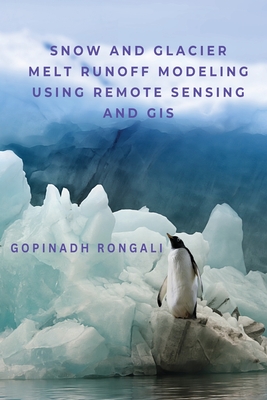
Snow and Glacier Melt Runoff Modeling using Remote Sensing and GIS
Description
As we know, snow is one of the forms of precipitation; however, hydrologist treats it differently
due to the temporal difference between the time of its fall and the time of its runoff, groundwater
recharge, and the fact that it is a part of various hydrological processes. The hydrological point
of view in relation with the snow is mostly considered in middle to high latitudes and mountainous
regions, where often melt period sometimes lasts for months following seasonal accumulation of
snowpack. During this accumulation period, there is a very small amount or no snow
melt. Precipitation (sometimes rain) falls and is temporarily retained as snowpack until the melt
season starts. It is mandatory for the hydrology to record how much amount of water is collected in
a basin in the form of snow. For a better knowledge of the hydrology of mountainous
terrain, detailed assessment of the areal distribution of snow, its quality, and the presence of
liquid water in it is also necessary. All of these snow indications are difficult to quantify and
measure, and they will most certainly differ from one location to the next.
Remote sensing (RS) provides a new tool for obtaining snow data for predicting snow and glacier
melt runoff. Researchers have manually collected snow data manually through snow- related
courses, which are labor-intensive, expensive, and potentially dangerous. Even when
accessible, snow course data represents simply a location in the region and can only be used as an
index of the available snow water content. Despite the fact that measurements are
considered automated, the difficulty of a single point measurement or observation of snow being
typical of a broader area or basin persists. It is one of the most easily identifiable forms of water resources
utilising aerial photography or satellite imaging in the case of remotely sensed snow data.
Satellite systems can currently only determine the area covered by snow, the depth of the snow, and
the snow water equivalent; physical snow parameters cannot be monitored directly by these satellite
systems.
The considerable amount of freshwater has been present in the nature in snow and glacier form in
the River basins which are, in most of the cases, located in high mountainous areas. Many other
water resources like lakes, Rivers, streams etc. are fed by the outflow of water from these
glaciers. The estimated glacier area in the world has about 14.9 x 10⁶ km , which is approximately
10% of the overall land area present on the earth (Singh and Singh, 2001). Although just 3% of this
snow is scattered over mountainous regions on many continents and even beyond the polar regions, it
serves a critical role in delivering water to the majority of the world's population. It has been
observed that the Himalayan mountains have a big contribution in freshwater supply
globally. Major Rivers present in south Asia certainly originate from the Himalayan mountain
systems. Among them, the Ganga, Indus, and Brahmaputra are said to be the lifeline of the Indian
sub-continent. Snow and glacier melt runoff also contribute to the Himalayan Rivers flow.
